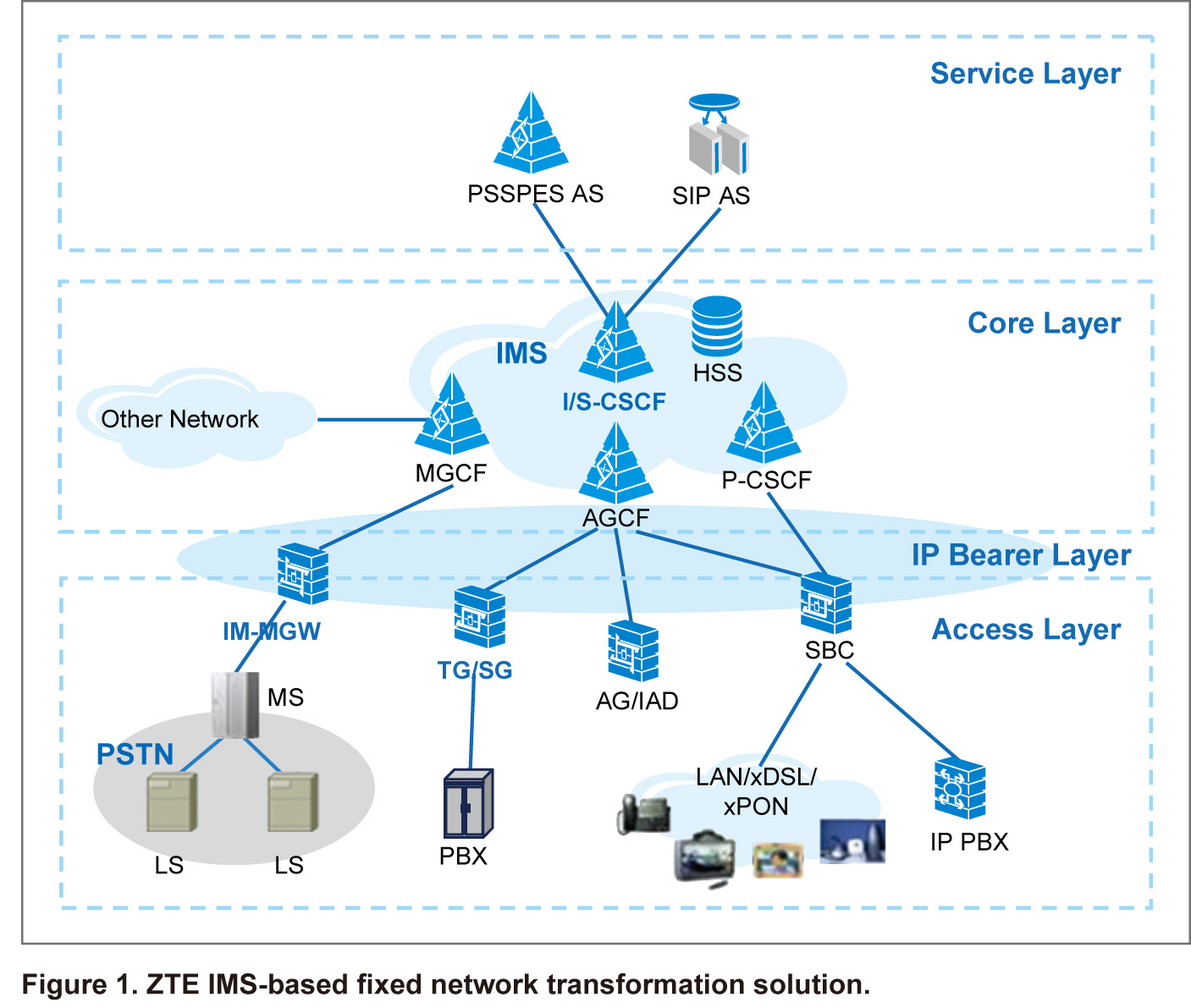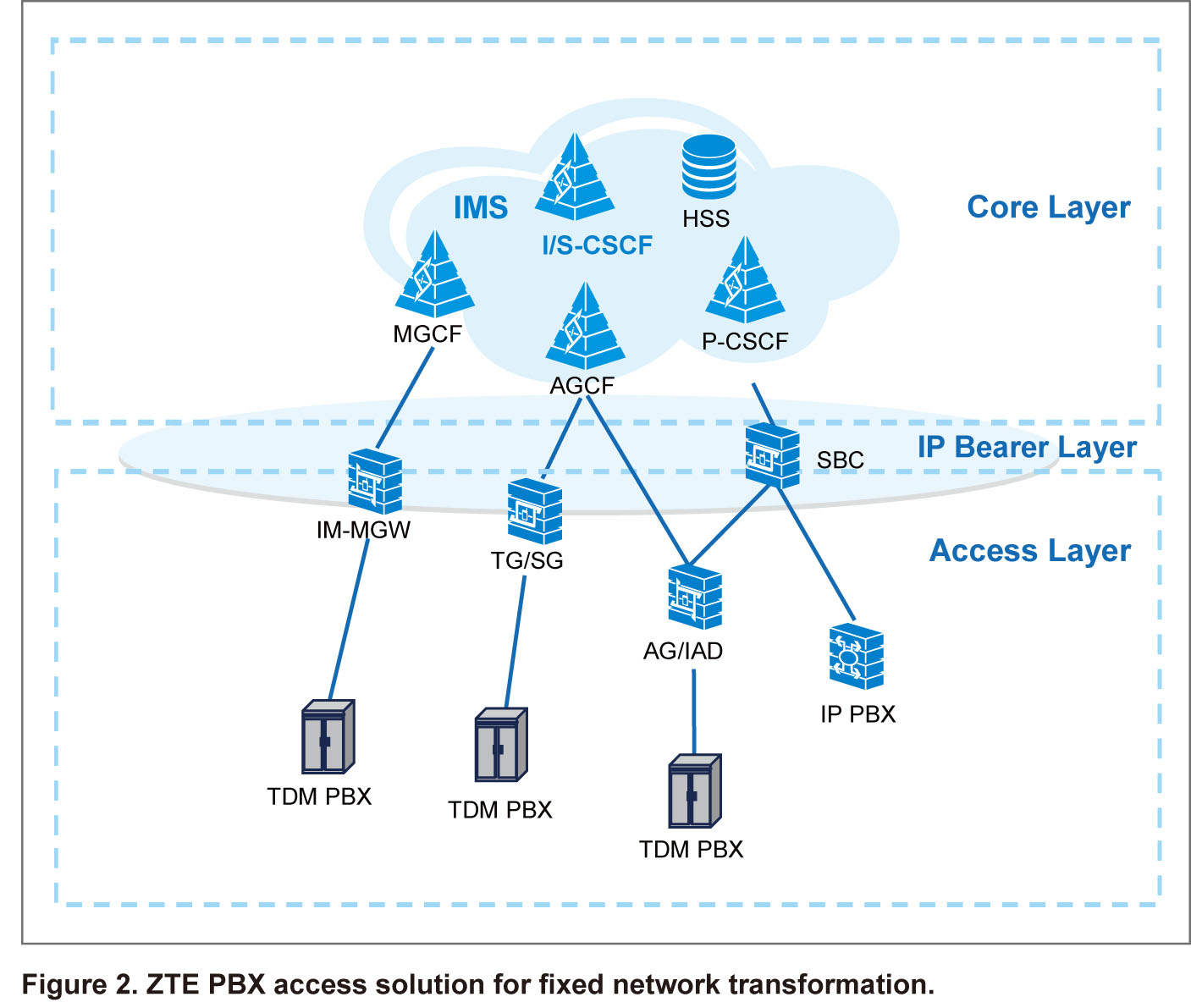IMS: An Impetus for Fixed Network Transformation
Around the globe, full-service operation is becoming a development trend within the telecom industry. Of the world’s top 100 operators, 67 are full-service operators that generate more than 70% of the industry’s total income and 63% of total profits. Full-service operators account for the majority of leading global operators. However, with the sharp increase in demand for integrated and multi-media services, full-service operators—in particular fixed network operators—are facing significant challenges. These include:
■ Complex structure and high maintenance costs due to the use of multiple switch modes (including fixed softswitch, fixed TDM, mobile softswitch, and mobile TDM);
■ The inability of existing softswitch networks to support integrated or multimedia services;
■ High management and maintenance costs of controlling a variety of devices and models in a decentralized manner. Some aging switching equipment may also need to be replaced;
■ Difficulty of sharing service capabilities among multiple networks with independent service platforms;
■ Greatly increased CAPEX and OPEX due to duplicated development of data management and service provisioning in all networks;
■ Network transition difficulty due to decentralized user management. Developing NGN users is problematic due to the difficulty of removing PSTN end offices.
It is hard for existing fixed network structures to be developed into integrated, flat, and intelligent structures capable of meeting future full-service demands. Existing fixed networks are incapable of providing integrated services and diverse multi-media services for all network users as softswitches are often inadequate for network evolution. Currently, IP Multimedia Subsystem (IMS) is considered a core control of NGN. Since 3GPP first put forward the IMS concept in R5, and with the subsequent development of IMS technologies, IMS has no longer been a subsystem in the mobile network. Instead, it has extended to the fixed network to become the point of convergence of fixed and mobile networks at the control layer.
IMS has become the best choice for fixed network transformation as its primary standards have basically reached maturity. It is recognized by mainstream operators as the technology of choice for their strategic transformation.
ZTE IMS-Based Fixed Network Transformation Solution
Based on years of experience in mature IMS commercialization, ZTE has launched an IMS-based fixed network transformation solution that supports multiple access modes and helps operators build an advanced full-service network, as shown in Figure 1. The IMS target network can be divided into four layers: service layer, core layer, bearer layer and access layer. It adopts an IMS-based PSTN/ISDN Emulation Subsystem (PES) structure, and introduces Access Gateway Control Function (AGCF) to access existing narrowband users. Thus, all narrowband users are controlled by IMS and can enjoy services provided by IMS.

To avoid any impact on existing services, fixed network transformation follows the principle of “introduce first, transform in steps”. New network elements are introduced first before replacing the network with IMS. The fixed network transformation with IMS can be done in three phases:
■ Phase I: Build a new IMS core network. Introduce AGCF and Proxy-Call Cession Control Function (P-CSCF) to access IMS users; introduce SIP AS to offer users broadband multimedia services; and introduce Media Gateway Control Function (MGCF) to allow the IMS domain to interoperate with the NGN domain, the PSTN domain, Media Gateway (MGW), and Tandem Switch (TS).
■ Phase II: Select a certain area for transformation trial. Trial the connection of existing narrowband users to IMS through AGCF, and the connection of existing broadband users to IMS through P-CSCF. Transfer user data and services to IMS and gradually implement unified billing and network management.
■ Phase III: Transform the whole network. All users have access to IMS to enjoy convergent fixed and mobile services.
ZTE’s IMS fixed network transformation solution addresses operators’ needs for personalized, diverse, and integrated telecom services, thereby enhancing their value through network transformation:
■ It breaks the original coexistence of multiple networks, and utilizes IMS for unified session control and service triggering. This simplifies network architecture and reduces OAM costs.
■ It establishes a unified user database to facilitate unified phone number distribution, authentication, and service provisioning.
■ It offers multiple access modes and supports a variety of terminal types.
It sets up a unified service platform that allows fast, easy, and flexible service provision.
■ It delivers feature-rich value-added services, such as video, instant messaging and multimedia, which is attractive to users and helps operators generate more revenue.
■ It provides unified network management, service handling, and billing.
■ It has open and standard architecture, making it easier for third-parties to deliver diverse services.
■ It helps operators implement end-to-end IP service control, making them controllers of the value chain, rather than mere pipe providers.
■ It realizes fixed and mobile convergence, as well as broadband and narrowband service convergence. This provides full-service capability for operators, and improves their competitiveness.
Case Study
As a leading global provider of IMS solutions, ZTE has implemented IMS fixed network transformation for many operators around the world.
In 2009, a European operator chose ZTE to help implement its fixed network transformation project. The operator ran both fixed and mobile networks, and its conventional fixed network had a complex structure with PSTN switching equipment supplied by four vendors. Many engineers were being employed for routine network operation and maintenance, which was resulting in high OPEX.
ZTE put forward its total IMS solution—which makes full use of the operator’s existing network facilities. The solution included IMS control layer, service layer, access layer, terminals, and OSS/BSS, and allowed for interoperability between various Private Branch Exchange (PBX) devices (PRI, TRK and SIP interfaces), as shown in Figure 2. In addition to original network capabilities, the operator could deliver diverse integrated services such as One Number and Converged Centrex, to enrich user experience. This successful IMS-based fixed network transformation put the operator on the road to fixed and mobile convergence.

ZTE has taken an active role in trialing and commercializing IMS for leading operators around the world. It continues to explore and leverage the great advantages of IMS for fixed network transformation. With the rise of global IMS markets, ZTE IMS-based fixed network transformation will continue to be an effective tool for fixed operators to transform their existing PSTN networks.